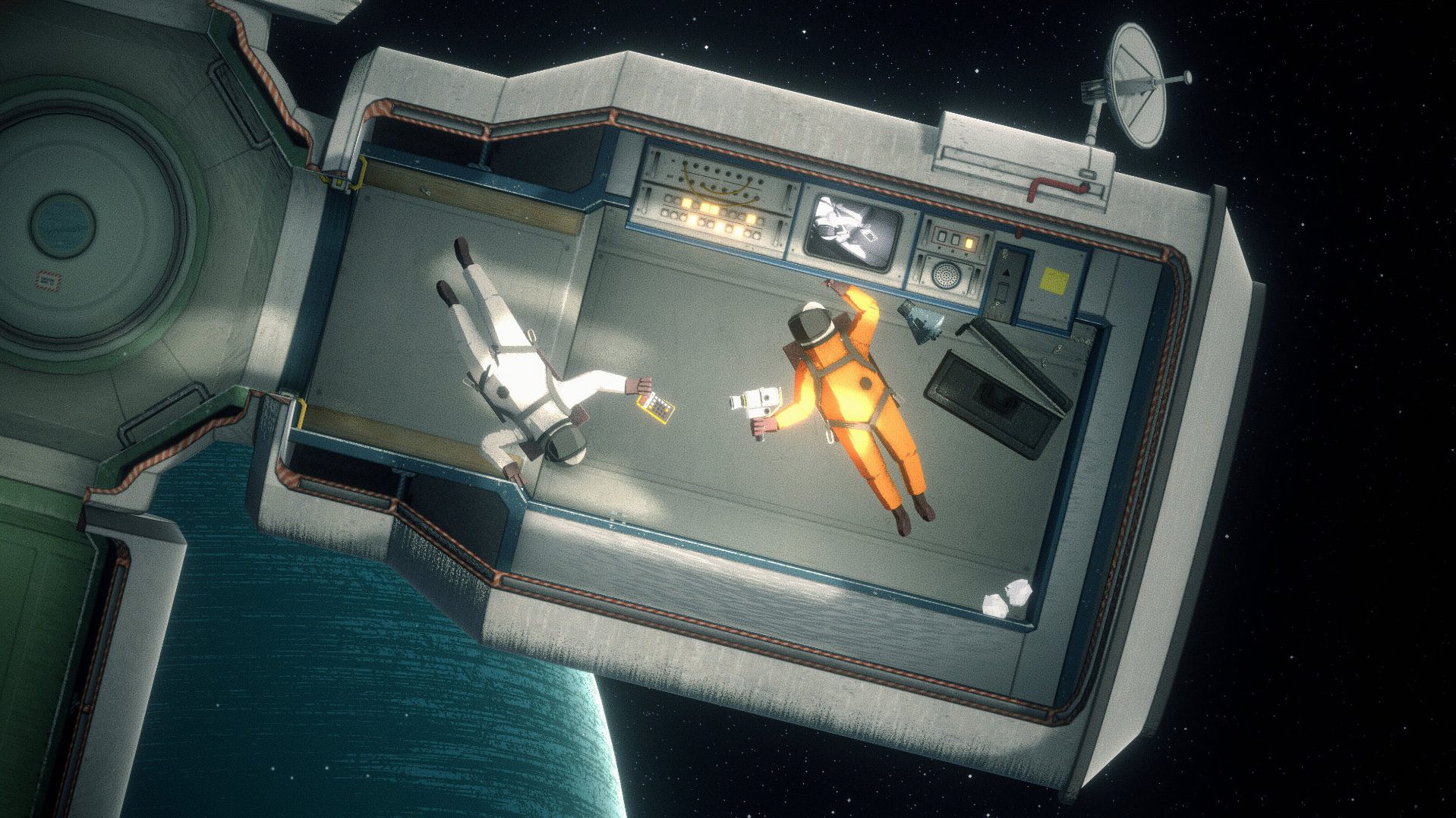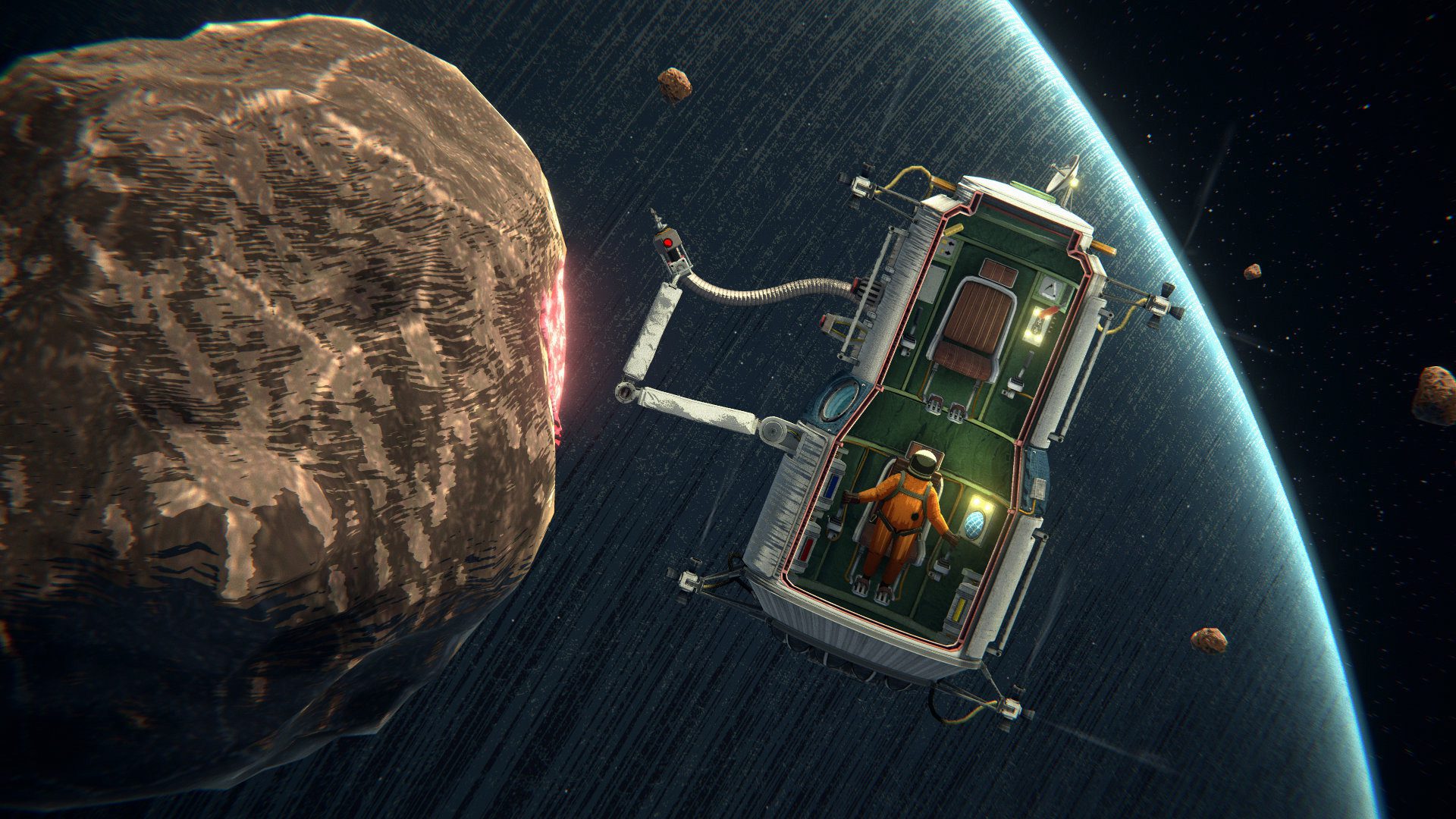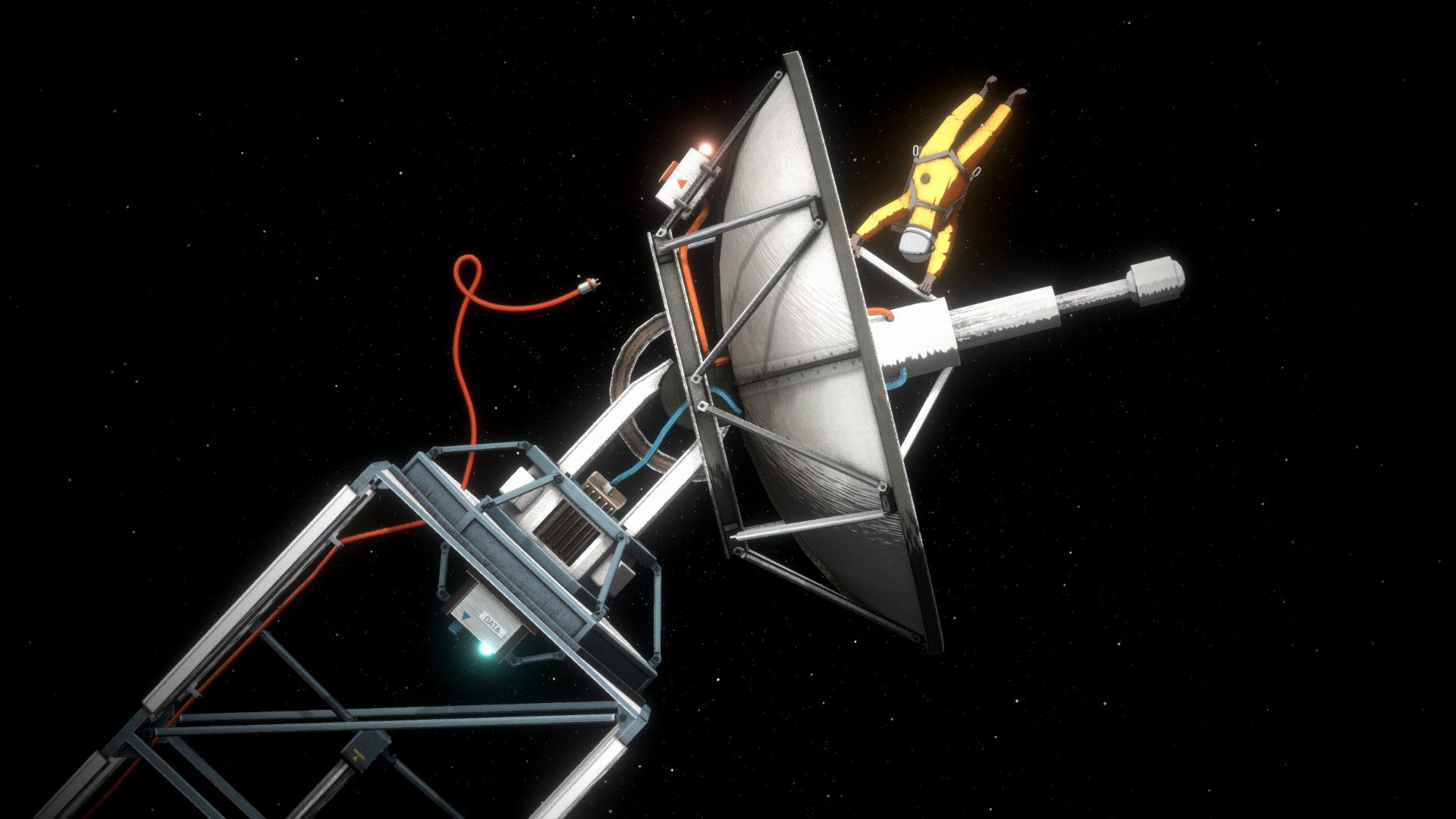Floating in a most peculiar way
Much like space itself, Heavenly Bodies can be beautiful, scary, and hilarious all at once.
In this one- to two-player “tricky physics” simulation game, there are so many moments where you can marvel at the station’s endearingly relentless attention to detail, worry about drifting out into the great unknown, or just get on your fellow cosmonaut’s nerves.
It’s a high-production-value effort from indie studio 2pt Interactive, but when you really boil it down, Heavenly Bodies is about zero-gravity physical comedy, which I love.

Heavenly Bodies (PC, PS4, PS5 [reviewed])
Developer: 2pt Interactive
Publisher: 2pt Interactive
Released: December 7, 2021
MSRP: $19.99
Before jumping into this review, I didn’t fully know what I was in for with Heavenly Bodies.
The trailer depicts cosmonauts performing various duties — adjusting the angle of a satellite dish, watering plants, and guiding a super-long crate through a cargo bay — yet it’s really not that straightforward. In this game, you have independent control of your arms and hands, and even the simple act of moving through a tunnel can be a struggle.
You’ll end up spinning and contorting and squeezing your way in — sometimes on purpose, many times on accident. It’s one of those “go with the flow” experiences where you have to eventually learn to take a breath and not rush. I expected some QWOP-style absurdity, but I was surprised by just how long it took me to get accustomed to the way these bodies operate. That’s not a complaint, though! It’s a fun game to try and master.
There are finicky fits, especially with accidental turns, but it never feels intentionally frustrating. While even the PC version is pushing gamepads (so that you can use one analog stick per arm), there are at least multiple control modes, the easiest of which is noticeably smoother when it comes to getting from Point A to Point B without a fuss.
The idea of pulling yourself along to build up momentum is easy to grasp. But once you’re “upside down,” and the contextual arm controls essentially shift — or you’re in a perilous situation — then panic can set in. This leads to these lively unplanned moments that are even funnier with another player in the mix. With good intentions, you can annoy each other. With a fiendish co-op rivalry, you can piss each other off. It’s a patience-tester.
Heavenly Bodies is split up into seven distinct scenarios, each with optional challenges to complete like finding and securing a hidden trinket or finishing the goal with the hardest and least forgiving of three control modes, Newtonian, rather than Classic or Assisted.
On our first run-through, most of the levels took anywhere from 30 to 45 minutes, and we ended up with a total playtime of around five hours, with plenty of room for replayability.
That might sound pretty brief, but for me, all seven levels were memorable in different ways, and the art direction never takes the easy way out, whether you’re mining far-off asteroids, pulling yourself through pitch-black ventilation shafts one hand at a time, or using crane arms to build a telescope. In lesser games, basic instructions wouldn’t matter as much, but in Heavenly Bodies, you’ve got a whole reference manual with detailed illustrations to pore over. This not only helps keep you immersed, it also plays into the puzzle-solving — there’s a certain order to your tasks and specific tools to find and use.
It’s super quick to pop open the manual at any time, and the goals are just intuitive enough to feel like you’ve earned your keep. We usually knew what we needed to do next in a general sense, but weren’t always a hundred percent sure how to go about it, so there was breathing room to explore, try things out, and communicate. It’s great puzzle design.

Control nitpicks aside, my main hangup has to do with co-op. While Heavenly Bodies lets players separate to an extent, you’re still more or less sharing the same screen real estate.
There were instances with some larger/longer rooms where I wish the screen could’ve dynamically split to let me do my own thing, then circle back and sync up. It’s not too offputting as is — the camera will pull back within reason to show both players — but that would’ve helped us play more efficiently. That said, accidentally (and intentionally) getting in your partner’s way can be a big part of the appeal, so the closeness isn’t all bad.
On that note, I really do think this game shines in co-op — though I wouldn’t consider that to be a caveat for solo players. Just something to consider. The optional challenges and potential for speedruns (including a timer option) help extend its longevity. I should also make it clear that the overall difficulty is nothing like QWOP or Getting Over It; it’s much more of a go-at-your-own-pace puzzle game rather than something you persevere.
Even in the frustrating moments when the controls seem to have it out for you, there’s so much to like about Heavenly Bodies. It’s a wonderful concept for a game, it’s impressively polished, and it’s hyper-focused in the best way. It feels like the devs took their time.
While it may be a struggle, it’s a fun struggle.
[This review is based on a retail build of the game provided by the publisher.]


